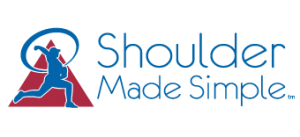Seniors: Stay active any way you can
By: Dale J. Buchberger, PT, DC, CSCS, DACBSP
Recently a patient came into the office and commented on a previous article that had appeared in the Citizen and said, “ You should write an article for seniors”. She felt that seniors tend to be ignored. This article will take a look at ailments affecting the “chronologically advanced” and some simple strategies for improving their function and comfort level.
Degenerative conditions such as osteoarthritis or degenerative joint disease generally advance with age. The most common areas for this degenerative breakdown are the shoulders, knees, hips and spine. This condition is nondiscriminatory affecting both males and females. There may or may not be a cause and effect pattern but by the time a patient presents for physical therapy their degenerative joint disease is accompanied by significant weakness and in the case of back, hip and knee ailments a reduced ability to balance. The balance difficulty results in an increased fall risk and subsequent disability.
There are some simple steps that patients can take to reduce their fall risk, decrease joint pain and increase their function. Generally speaking activity is a good thing. Keep moving when possible. Go for a walk around the block when the weather permits. If the weather is to cold there is always Fingerlakes mall for “mall walking”. Some patients don’t like to risk leaving the house in bad weather and invest in a treadmill for their home. To improve cardiovascular fitness you need a minimum of 12 minutes per day of continuous walking. To lose weight or alter body composition you need 30-40 minutes of continuous walking at least 4 days per week. Walking will help with maintaining muscle strength and bone density.
Bridging exercises are simple and can be performed in the home preferably on the floor but if you have difficulty getting up and down off the floor they can be performed in bed. Simply lie on your back and bend your knees so that your feet are flat on the floor or bed. Press your feet into the floor, lifting your bottom off the floor. Hold your bottom in the air for 5-seconds, lowering it slowly. Start with 5-10 repetitions twice a day, progressing to 25-30 repetitions twice a day and 5 days per week. This will strengthen your hip muscles and improve your ability to balance and walk with more confidence.
If you have stairs in the house with a side railing use them as a form of exercise rather than avoiding them. The Actress Betty White who has recently become popular again in her 80’s gave an interview in Parade Magazine. When asked if she had an exercise routine she was quoted saying, “I have a two floor home and a bad memory”. Her inference was that she climbs the stairs in her home on a regular basis and this helps keep her fit.
In addition to these simple ideas there is a variety of home exercise equipment that is inexpensive, functional and safe. The Total Gym® is the most commonly recognized piece of home exercise equipment that we recommend to our patients. It is simple, provides functional movement patterns for the arms, legs and trunk and allows for good support for it’s exercises. There are a variety of models at varying price ranges making it affordable for almost anyone. It is based on using a percentage of the patient’s body weight making it highly customizable. It is a great piece of home exercise equipment for “experienced” population. Keep in mind that Chuck Norris (known endorser of the Total Gym®) is now in his 70’s.
If you would like to get out of the house and combine your fitness maintenance program with some social activity the Auburn YMCA has many programs for older individuals. In addition to having the programs in place they have personnel available to instruct you on correct performance of the exercises and programs activities. The YMCA can provide options for exercise both on land and in the pool giving you a variety of choices for maintaining your fitness level.
Keep in mind that you should be examined by your doctor to rule out any potential conditions that may preclude you from participating in a fitness program. If your doctor gives you clearance to begin a fitness program but with limitations make sure you abide by those limitations and let any fitness instructor know what those limitations are before engaging in the program. If you are given unrestricted clearance to exercise choose the form that you enjoy the most. If you enjoy it you are more likely stick with the program. If you have an ailment that is preventing you from exercising or from increasing your activity level see a healthcare provider that you trust and have your ailment examined especially before beginning a fitness program.




